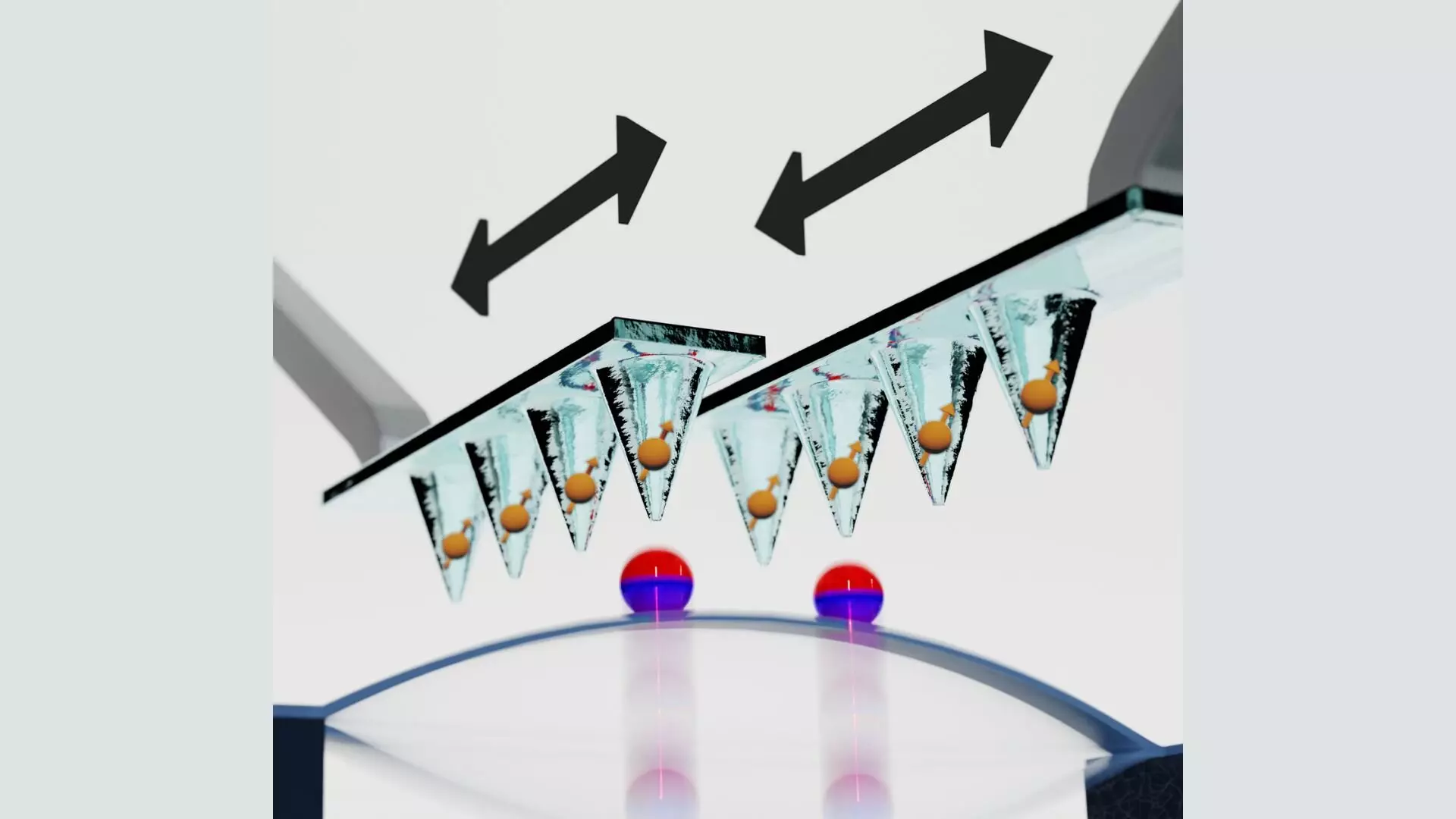The pursuit of harnessing quantum mechanics for practical applications has led to breathtaking innovations in the field of quantum computing. Traditional quantum systems have always grappled with a fundamental issue: the delicate balance between maintaining long coherence times and achieving scalability. Recent research published in *Physical Review Letters* aims to bridge this gap by introducing a remarkable method to integrate solid-state spin qubits with nanomechanical resonators, offering a tantalizing glimpse into the future of scalable and programmable quantum architecture.
Solid-State Spin Qubits: A Double-Edged Sword
Solid-state spin qubits, particularly nitrogen-vacancy (NV) centers embedded within diamond structures, have emerged as one of the most promising contenders in the race for effective qubit systems. Their defining characteristics—long coherence times and low interaction with environmental noise—make them strong candidates for quantum computing. However, the very properties that make these spin qubits appealing also introduce significant hurdles: their limitations in terms of scalability and interaction range.
Professor Mikhail Lukin’s group at Harvard University, spearheaded by Frankie Fung, delves into these challenges head-first. Traditional qubit systems based on solid-state spins often rely on magnetic dipole interactions, which are notably short-ranged. This constraint results in difficulties when attempting to build larger arrays of qubits necessary for complex quantum operations. Fung articulated this dilemma succinctly, noting the complications encountered when trying to control and manipulate large qubit systems due to their restrictive interaction distances.
Introducing Nanomechanical Resonators: A Game-Changer?
The proposed solution lies in the coupling of NV centers to nanomechanical resonators, a groundbreaking architectural vision that could redefine quantum computing’s landscape. These nanomechanical resonators, tiny mechanical oscillators operating at nanoscales, serve as intermediaries that expand the range of qubit interactions. Fung notes the innovative potential of positioning individual spin qubits at specific points above these resonators, allowing for dynamic and programmable connectivity between qubits.
This transformative method transforms interaction paradigms, enabling non-local qubit interactions that lay the groundwork for creating extensive quantum processors. By significantly broadening the interaction capabilities of individual spin qubits, researchers are pushed closer to the vision of a large-scale quantum computing framework, navigating the once insurmountable growth barriers imposed by traditional systems.
Technical Foundations: How It All Comes Together
At the heart of this innovative approach is the unique structure of NV centers within diamond materials. The delicate substitution of a carbon atom with nitrogen, creating adjacent vacancies, results in the formation of NV centers. Their optical compliance—combined with strong sensitivity to magnetic fields—positions them ideally for integration with more extensive quantum systems.
By harnessing the power of nanomechanical resonators, the researchers leverage the oscillation properties of these small devices to mediate spin-spin interactions among qubits. The dynamic interplay between qubit spin states and mechanical oscillation translates directly into the modulation of frequency responses, ultimately altering the interaction framework between qubits—a foundational requirement for entangled state creation and complex quantum computations.
Challenges and Promises of the Proposed Architecture
While the proposed architecture shows phenomenal promise, several hurdles remain. The proof-of-principle observations made by Fung and his team were commendable; they demonstrated coherent operation even when qubits shifted in magnetic fields. Yet, the quality factor observed was around one million, significantly irregular when compared to the potential highs of ten billion recorded for state-of-the-art mechanical resonators.
This gap highlights the necessity for future improvements, including the introduction of optical cavities in tandem with the nanomechanical resonators to refine measurement capabilities and enhance overall system performance. Such advancements could pave the way for transferring information between qubits and mechanics with unprecedented precision, unlocking new applications and functions in quantum information science.
The Future of Quantum Systems: A Hybrid Approach
The combination of solid-state spin qubits and nanomechanical resonators not only broadens opportunities for scalability but also introduces the concept of a hybrid quantum system. By merging various qubit types and utilizing the diverse interactions available via nanomechanical devices, researchers can confront the limitations inherent in each qubit type. This multifaceted approach suggests a critical turning point in quantum technology that can enhance both the efficiency and connectivity of quantum processors.
As researchers continue to refine these concepts, the vision of accessible, large-scale quantum computing inches closer to reality. The implications of achieving practical quantum information processing are vast, holding the potential to revolutionize fields ranging from cryptography to complex simulation. As scientists work in this area, the world watches closely, eagerly anticipating how these insights might unfold into tangible technological marvels.

